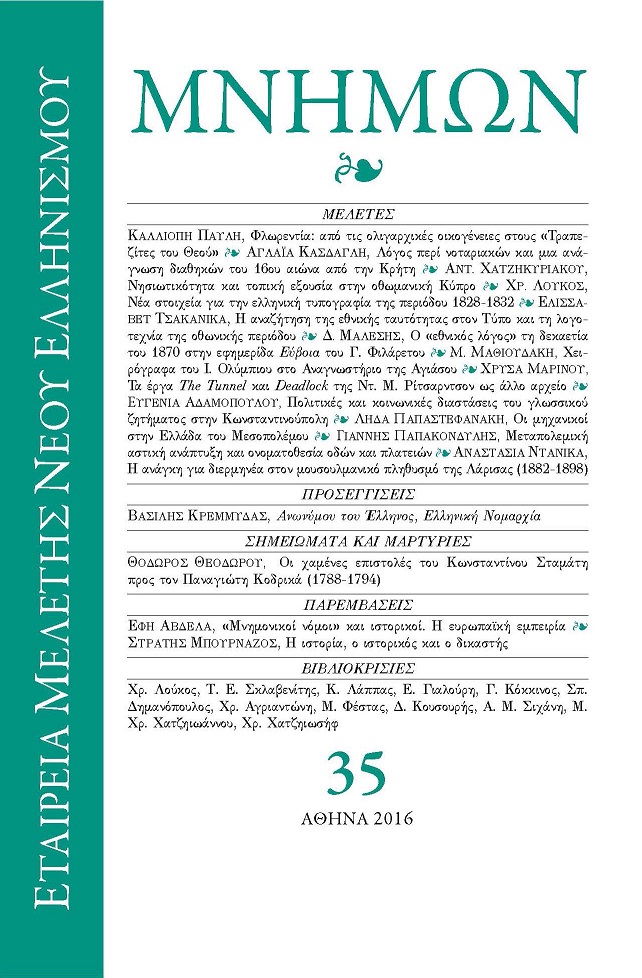Dorothy Richardson’s The Tunnel and Deadlock as Literary Archive: A Working Woman at the Βeginningofthe20th Century London

Published:
Apr 22, 2019
Keywords:
gender hisrory cultural hisrory
Abstract
This paper proposes a reading of Dorothy Richardson’s The Tunnel (the fourth out of the thirteen novels that comprise Pilgrimage) with a focus on her heroine’s working life as a dental assistant. By making Miriam Henderson critically reflect on the urban and social surroundings —e.g. the condition of the London employees— Richardson (1873-1957) documents her own life between 1891 and 1915 and emerges as the woman archivist who provides a challenging, radical commentary. Miriam’s portrayal is “beyond the scope of traditional romance and marriage plots,” it is the experience of “living with work.… a life of white collar urban poverty” (Mepham 462). Thus, Richardson’s materialist historiography, read retrospectively, shares affinity ties with Walter Benjamin’s archive of the city and of modernity; both attempt to rescue a specific cultural heritage of fragments from oblivion and both turn the “excavation sites” of experience into “construction sites” where there can be “a shift away from a melancholic culture that views the historical as little more than the traumatic” (Foster “Archival Impulse” 22). My intention is to explore the way Richardson articulates a voice from the margins, and, in that, to pursue Benjamin’s lead of subverting hegemonic discourses and standard histories. In 1912, when at the age of 36, Miriam, the author’s alter ego, sits down to write what will eventually become Pilgrimage, the working woman and the archivist become one.
Article Details
- How to Cite
-
ΜΑΡΙΝΟΥ Χ. (2019). Dorothy Richardson’s The Tunnel and Deadlock as Literary Archive: A Working Woman at the Βeginningofthe20th Century London. Mnimon, 35(35), 189–203. https://doi.org/10.12681/mnimon.20256
- Issue
- Vol. 35 (2016): Μνήμων
- Section
- ARTICLES

This work is licensed under a Creative Commons Attribution-NonCommercial-ShareAlike 4.0 International License.
The copyright for articles in this journal is retained by the author(s), with first publication rights granted to the journal. By virtue of their appearance in this open access journal, articles are free to use (with the exception of the non-granted right to make derivative works) with proper attribution for non-commercial uses (licence Creative Commons 4.0). EKT/NHRF retains the worldwide right to reproduce, display, distribute, and use articles published in Mnimon in all formats and media, either separately or as part of collective works for the full term of copyright. This includes but is not limited to the right to publish articles in an issue of the Journal, copy and distribute individual reprints of the articles, authorize reproduction of articles in their entirety in another EKT/NHRF publication, and authorize reproduction and distribution of articles or abstracts thereof by means of computerized retrieval systems.Downloads
Download data is not yet available.


